巻号一覧

17 巻 (1976)
- 3 号 p. 79-
- 2 号 p. 43-
- 1 号 p. 1-
17 巻, 2 号
選択された号の論文の3件中1~3を表示しています
- |<
- <
- 1
- >
- >|
-
板倉 秀, 斎藤 きくゑ1976 年 17 巻 2 号 p. 43-47
発行日: 1976/07/25
公開日: 2010/06/22
ジャーナル フリーA case of mutism with sudden onset was reported. A 5 year-old boy developed mutism while looking at TV screen. No definite cause was disclosed though psychogenic origin was strongly suggested. The patient became able to talk in whisper after speech training and play therapy for 2 years. A discussion on the course and training was made based on the clinical observation.抄録全体を表示PDF形式でダウンロード (718K) -
永渕 正昭1976 年 17 巻 2 号 p. 48-59
発行日: 1976/07/25
公開日: 2010/06/22
ジャーナル フリーThe purpose of the present study was to compare the speech behavior of stutterers and nonstut-terers under DAF condition. The normal group was 16 young adults, 8 males and 8 females. The stuttering group consisted of 11 males ranging in age from 13 to 28 years. Each subject read 100-word passages under seven different delay times with feedback level of 70 and 90 dB. The speech behavior of the two groups under DAF was studied with reference to reading time ratio and articulatory error.
The speech behavior of normal group was most disturbed at delay time of 200 msec with 90 dB. Moreover, the effects of DAF on the male were greater than the female.
As for stutterers, the stuttering was most reduced under the delay time of 66 or 130 msec with 70 dB. Under delay times of more than 200 msec with 90 dB, the performances of nonstutterers and stutterers were not very different.
The most interesting finding was the lack of homogeneity of DAF effects on stutterers. It may be that responses under DAF separate stutterers into two or more subgroups.抄録全体を表示PDF形式でダウンロード (1059K) -
―その臨床経験―福迫 陽子, 沢島 政行, 阿部 雅子1976 年 17 巻 2 号 p. 60-71
発行日: 1976/07/25
公開日: 2010/06/22
ジャーナル フリーThis is a review on 71 children with disorders of articulation, or“functional articulation disorders”seen in our speech clinic. The children were classified into two groups, group A and group B, according to the pattern of their articulation errors. Group A consisted of 32 children with articulation errors commonly found along the course of normal speech development. Group B involved 39 children showing different types of errors from those observed in normal development of speech. The observed results were summarized as follows.
(1) Substitution of {t/k, d/g} and {t or t∫or∫/s, d or d _??_/dz} were typically found in group A, whereas in group B, there were various types of errors including lateral lisping type, glottal stop, nasal articulation and abnormal palatal articulation.
(2) Affected sounds were more variable in group B as compared to group A. Errors for t∫, t, d, n, i, p and b were observed only in group B.
(3) Spontaneous correction of the errors was obtained in some cases in group B as well as in group A for the age range of 4 to 6 years.
(4) Articulation training achieved good results in both groups. However a longer time period of training was needed for group B in general, due to a greater number of errors to be corrected.
(5) Correction of errors such as s/t, k/t, k/s, lateral lisping type and abnormal palatal articulation appeared to require longer time than that of other errors.
(6) Application of distinctive feature analysis for the discription of articulation disorders was also discussed.抄録全体を表示PDF形式でダウンロード (1522K)
- |<
- <
- 1
- >
- >|